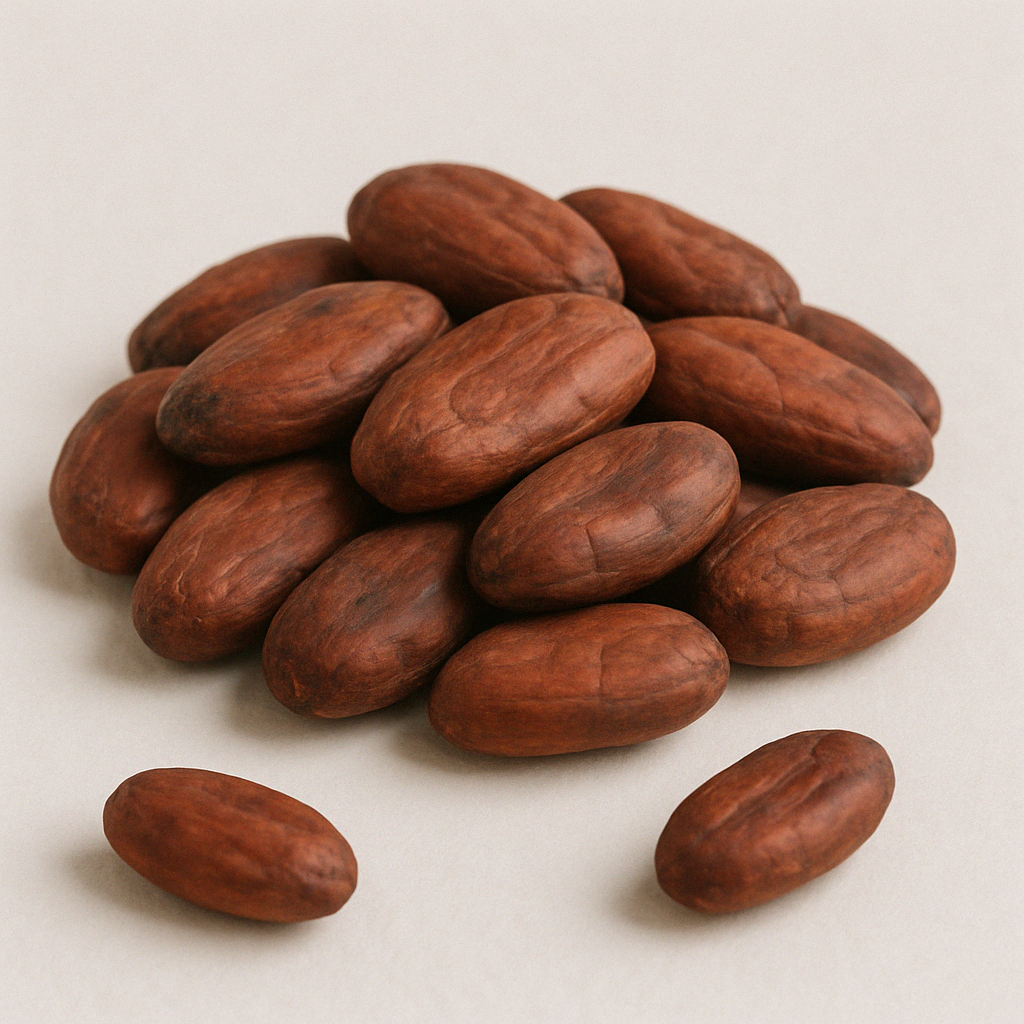
코코아 콩 from 미국
Be the first supplier featured in this market.
About this market
About
History
Cocoa cultivation in the US began in Hawaii in the early 1800s, introduced via botanical experimentation during the plantation era. However, commercial interest only gained traction in the early 2000s, when global demand for single-origin and artisanal chocolate sparked investments in local cocoa farms. Puerto Rico and Florida have more recently entered the scene through research-driven and boutique farm initiatives.
Production Region
US cocoa production is highly localized, restricted to tropical and subtropical areas:
- Hawaii (Big Island): The main production hub with over 40 farms.
- Oahu and Kauai: Smaller-scale farms and pilot programs.
- Puerto Rico: Smallholder farms, supported by university and USDA programs.
- Florida (South Florida): Very limited pilot trials in protected microclimates.
Growing Conditions
US cocoa cultivation takes place in non-traditional environments with specialized management:
- Temperature: 20–32°C (Hawaii and Florida microclimates).
- Rainfall: 1,200–2,000 mm/year (irrigation used in dry months).
- Soil: Volcanic soils in Hawaii; well-drained sandy loam in Florida.
- Altitude: 100–300 meters in Hawaii’s orchards.
Harvesting Process
High-quality, small-batch harvesting and processing define US cocoa:
- Manual Harvesting: Hand-cut pods.
- Fermentation: In wooden boxes or barrels, carefully monitored for flavor development (5–7 days).
- Drying: Controlled sun-drying or solar dryers.
- Sorting: Done by hand for premium, low-defect beans.
- Traceability: Each batch is traceable to individual farms or lots.
Cultivation Method
Farms in the US emphasize quality over volume:
- Agroforestry: Cocoa interplanted with bananas, papayas, and native trees.
- Organic Practices: Widely used, often USDA Certified Organic.
- Research-Based Techniques: Collaboration with universities (e.g., University of Hawaii).
- Tourism Integration: Many farms offer chocolate tours and tastings to supplement income.
Supply Chain
The supply chain is highly shortened and direct-to-consumer:
- Farmers & Micro-Farms: Often vertically integrated (grower + processor).
- On-Site Processing: Some farms roast and make chocolate directly.
- Craft Chocolate Makers: Purchase directly from US cocoa farms (e.g., Manoa Chocolate, Madre Chocolate).
- Local Retail & Online Sales: Premium-priced chocolate and nibs.
- Export: Minimal, often to Japan or US mainland from Hawaii.
Local Logistics
Given small volumes, logistics focus on quality preservation:
- Transport: Local inter-island shipping in Hawaii; air freight for specialty exports.
- Storage: Humidity-controlled facilities.
- Distribution: Sold locally or online through premium retailers.
Regulations and Certifications
Though limited in scale, regulations still apply:
- USDA Organic Certification: Common among US producers.
- FDA Oversight: Covers food safety and hygiene.
- State Agriculture Departments: Provide grants and technical support.
- Traceability Standards: High due to proximity to consumers.
Quality Standards
US cocoa is positioned as ultra-premium, specialty-grade:
- Fermentation: Controlled for flavor complexity.
- Bean Size: Medium-large, uniform.
- Moisture Content: Below 7%.
- Flavor Profile: Fruity, nutty, floral, and winey notes depending on terroir.
- Zero Defects: Often hand-sorted for craft chocolate use.
Trade Terms
Trade is mostly domestic or micro-export:
- MOQ: As low as 5–50 kg for artisanal buyers.
- Packaging: Vacuum-sealed or food-grade bags.
- Pricing: Very high premiums, often USD 10–20/kg, with direct-trade or boutique pricing.
- Payment: Online platforms or wholesale agreements.
Environmental and Social Impacts
Despite its niche size, US cocoa focuses on sustainability:
- Land Stewardship: Hawaiian farms maintain native biodiversity.
- Education and Research: Supported by land-grant universities.
- Local Economic Impact: Cocoa farms support agro-tourism and rural jobs.
- Zero Deforestation: Land already under cultivation or rehabilitated.
- Carbon Neutral Goals: Some farms aim for net-zero production.
Uses
Cocoa beans from the US are primarily for value-added products:
- Single-Origin Chocolate Bars: Directly from farm or artisan brands.
- Cocoa Nibs and Powder: Used in health foods and natural products.
- Agro-Tourism: Hawaii’s cocoa farms serve as educational and culinary attractions.
- Specialty Exports: Select lots sent to Europe and Japan for boutique chocolatiers.
Additional Information
While the US will never be a major cocoa grower by volume, its domestic industry offers highly traceable, sustainable, and unique cocoa beans from non-traditional regions. Hawaii is now recognized globally for its fine-flavor cocoa, and US-grown beans continue to gain popularity in the craft chocolate community.
Harvesting seasonality
Varieties
Trinitario
Most common for flavor complexity.
Criollo
Used for high-end, boutique production.
Forastero
Less common, higher yield, mainly in trials.
Export of 코코아 콩 from 미국
Export overview
Export trend
Verified suppliers
/132x132/company-logo/94/f6/b4/94f6b4ac9525f7834acec5bcfa2ea25251928519/Picture1.png)
/132x132/company-logo/3a/78/47/3a78478f9b7ef24b6c4d1435c5e827a51c3e5780/PEARSON_CASSANGa__cocoa_co.png)
/132x132/company-logo/75/95/17/759517ec0e79b343f06e28e5316bf325ecc90e83/Mother_Jungle_Logo_Final_High_Resolution.png)

/132x132/company-logo/96/58/c7/9658c79b63ac026f26e8df887cea268b87e49e98/ECTC_Logos-01.png)
/132x132/seller-logo/ef/3c/12/ef3c123ebcdb5ab75d580c0e7b0a711ca049eacb/logo.png)









